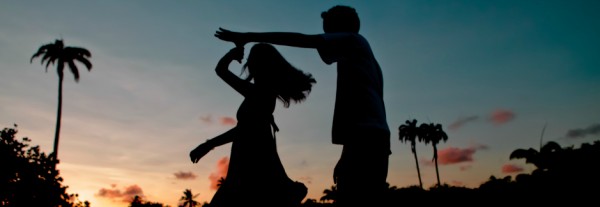
Forró is the Brazilian, now very much international, hip-swivelling, dance floor-filling, popular music and dance originated in Brazil’s north-eastern states. As some forrozeiros (fans of forró) would put it, “it’s less competitive than salsa and less pedantic than tango…”. It is arguably one of the easier partner dances to master, which would explain why it’s so addictive and increasingly popular! Oh, and by the way – it’s pronouced “faw-HAW”…
The music…
Traditionally, the music involves only three instruments: an accordion, a bass drum called zabumba and a metal triangle. This folk music from the arid Nordeste region draws its origins from African as well as European rhythms (think central-european polka…) and was played in the popular balls. There are many styles: in addition to forró, you will hear the words baião, xote, xaxado or xamego, which all describe variations of the same type of rhythm. The lyrics are often full of nostalgia for rain, home, or lost love. The charismatic accordion player Luiz Gonzaga was one of the first, most famous and loved figures that increased the popularity of the genre outside its original region, especially in cities like Rio de Janeiro and São Paulo, with large populations of immigrants from the Nordeste.
Check out some of our selected forró music here.
…and the dance
In the traditional style, partners are usually in close embrace and move sideways without any spins or arms movements. However in the recent past a more modern dance style emerged – by incorporating moves from other partner dances, it made forró more modern and attractive. It first became popular with the young crowds in cities like São Paulo, and then more surprisingly spread abroad and especially in Europe. There are many debates and arguments on what constitues each style: forró pé-de-serra and arrastape more focused on legwork, forró universitario more focused on spins and technique, and so on… You can check the videos below and make your own opinion!
Check out some videos here.
And here’s a documentary that summarises nicely some of the highlights of the forró scene.
